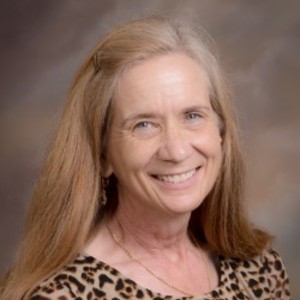‘Retired’ OT professor not resting on laurels

Jan. 23, 2024 — DENTON — Tina Fletcher is not resting in retirement. Fletcher, a professor emerita in the School of Occupational Therapy, retired from Texas Woman’s in 2022. While she now has more time for traveling, she has continued to write and recently published a book along with four collaborators.
Success on the Spectrum: Practical Strategies for Engaging Neurodiverse Audiences in Arts and Cultural Organizations, was published by Rowman & Littlefield in January and is co-written by Fletcher, Emily Wiskera, Anna Smith, Lynda Wilbur and Francis Yong Chen. The authors, with expertise as museum educators, as an occupational therapist and a school psychologist, offer advice on how to improve experiences in cultural arts for individuals with autism spectrum disorder and other forms of neurodiversity.
Fletcher’s career at Texas Woman’s focused on the impact of art making on clients and caregivers receiving occupational therapy and on improving participation in community cultural arts and entertainment venues for visitors with special needs. Her expertise in these areas is captured in this book.
Fletcher answered a few questions about her book and how her time at Texas Woman’s contributed to it. Additionally, she has decided to come back to teach in the spring 2024 semester at TWU.
Was this your first book?
I have written several book chapters and an extensive curriculum for people on the autism spectrum, but it's the first book I've written with a publisher like Rowman & Littlefield.
Who is the intended audience?
While I think occupational therapists will get plenty of ideas from the book, we primarily aim to reach museum professionals. They are under a lot of pressure to provide inclusive events for their visitors and most have little to no training in this area. I get a lot of calls from Europe for help, and was a keynote speaker in an international autism conference hosted by the National Palace Museum in Taiwan. Many cultures are reforming their notions of what it means for neurodiverse people to participate in community life in general and are working hard to be successful.
Another group of readers I can envision benefitting from the book are teachers who take students on field trips. As a former school therapist, I went on many field trips with people who could have benefitted from specific preparation.
What was the impetus for the book?
Definitely me, considering retiring. About eight years ago, we formed what we call a Sensory Consortium. So, all of us wanting to have those guidelines in print started the whole process.
How did all of your research and professional experience lead to this book?
First, I have to credit the School of Occupational Therapy with being so flexible and open-minded about the off-the-wall ideas I've had. Secondly, whenever TWU would pull together writing opportunities, I would participate in them, and I know they helped. The other thing I've had a lot of luck with are finding like-minded individuals in museums and other community venues. Then I received a $250,000 grant from the state of Texas for innovative autism program development. I took that responsibility really seriously. All in all, being comfortable in art environments, and having gone to art school for nearly a decade was also foundational to my ability to navigate the museum world.
How did your background in the arts, autism and OT come together?
I'm so lucky I was an occupational therapist first. It gave me financial stability and a professional identity. After about 10 years of really solidifying my skills as a therapist, I began my journey through art school, all while practicing as a therapist. I worked for 10 school systems, and usually could negotiate for least half the summer off, and my husband and I would haul our girls to various places like London or Perugia, Italy, where we would live in attics or barns while I worked in art studios. It was a lot of work, but a true labor of love. So along the way, I met the access planner at the Dallas Museum of Art, and we started small with little autism events and they grew to gargantuan sizes of up to 450, so we created a community consortium where we could share resources and collaborate on event dates.
What was the biggest revelation or discovery when writing/doing research for the book?
I have learned that people want to be helpful, they want to provide inclusive experiences, and they want to treat all individuals fairly. The more exposure people have to diversity, the easier it is to incorporate that into everyday life, not just fancy events. Repeated exposures to individual differences make things easier.
You collaborated with four other authors. How did you all work together?
It was a fantastic experience! We had weekly Zoom meetings that usually included me trying to convince them they needed to know all the reasons we were doing something and they would shout, ‘No, we don't need to know how the vestibular system works! If you understand it, that's good enough for us!’ So, lots of humor, mutual respect, and collaboratively good work ethics. And a fascination with lavender lattes. I hope we can write more together. If we sell enough books, our editor is willing to negotiate for a companion book to our current efforts, so fingers crossed. Please buy hundreds of books!
Media Contact
Amy Ruggini
Digital Content Manager
940-898-3628
aruggini@twu.edu
Page last updated 3:48 PM, January 26, 2024